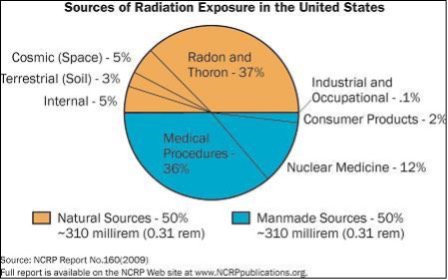
Situation NORMal: Naturally Occurring Radioactive Materials and What to Do About Them
From Marie Curie to radium toothpaste to Godzilla and ducking under school desks, radioactivity has held a vivid place in the world’s imagination for more than a century. The word instantly conjures up images of mad scientists, mushroom clouds, and mutants whenever it’s mentioned, but most people are unaware that radiation is far more common and less exotic than the scary announcer voice of the Atomic Age would have us believe.
Low levels of radiation surround us literally every day and everywhere we go, coming from sources like the sun and the soil beneath our feet, and our bodies are designed by nature to handle a certain amount of it without permanent harm. The earthly sources are known as naturally occurring radioactive materials or NORM. Human activities such as mining and oil and gas exploration can also expose us to NORM in higher doses than the natural environment. In this post, we will discuss what NORM is, when they are harmful, and what regulations and procedures are related to mitigating their effects.
What is NORM?
NORM specifically is materials found in the environment that contain naturally occurring radioactive elements. The most common radioactive elements found in nature are Uranium, Thorium, Radium, Radon, and Potassium.
Is NORM Harmful?
Radioactive materials have been present in the Earth since the formation of the solar system billions of years ago, so the entire history of life has occurred against this background of low-level radiation, and organisms of all types have found a way to cope with it and thrive. According to the Nuclear Regulatory Commission (NRC), the average annual natural dose of radiation in the United States is just over 310 millirem (3.1 millisieverts or mSv) per year. Manmade sources such as medical procedures and certain consumer products contribute another 310 millirem, meaning the annual dose received by the average person is about 620 millirem.

High doses of 50,000 millirem or more are known to kill cells directly. Doses below 50,000 can damage or alter a cell’s genetic code, which is known to be a precursor to many types of cancer. Spread out over a longer time, the body has more opportunities to repair or replace radiation-damaged cells. At this time, there are no data to establish a firm link between cancer and doses below about 10,000 millirem, which is still 32 times higher than the natural background. Based on these numbers, exposure to NORM does not constitute any significant risk of cancer or other long-term health issues.
What are TENORMs?
Technologically enhanced NORM, or TENORM, are NORMs that have been artificially concentrated by means of industrial processes. Some of the industries that can accomplish this include:
- Mining of coal, metals, and rare earth elements
- Oil and gas production (produced water, mineral scale inside pipes, contaminated equipment, etc.)
- Fertilizer (phosphate) production
- Construction using stone and earth/mineral products like bricks
- Recycling
How is NORM regulated?
The U.S. has no current federal regulations addressing the handling and disposal of oilfield NORM wastes on the books, so regulation of NORM is left almost entirely to the states, although technically the EPA has jurisdiction over NORM. The Conference of Radiation Control Program Directors has developed model state regulations for the control of NORM. While Texas has largely adopted their suggested model, regulations in Louisiana for scales and sludges differ significantly from the model. Other states with NORM regulations either enacted or under consideration include major oil producers such as California, Oklahoma, New Mexico, Mississippi, and Kansas.
When should you assess for NORM?
If you are operating in an oil and gas field known to contain NORM-bearing deposits, it is a good idea to assess the risk posed by waste accumulation at and around your worksite. Workers involved in tank cleaning and scale removal for pipe reclamation are at higher risk, so testing for NORM concentrations in these areas should be a priority, along with developing employee safety guidelines for handling waste with elevated levels.
Assessment is also strongly recommended for property transactions when buying oil and gas assets or property formerly used for oil and gas production. You don’t want to be stuck cleaning up contaminated soil and groundwater or disposing of contaminated equipment left behind, so proper assessment can make or break a sale.
How can EDGE help?
If you believe that your operation may be at risk of hazardous NORM concentration, EDGE provides NORM survey and remediation oversight services overseen by licensed Professional Geologist and Radiological Safety Officer Robin Mann. Mann is a senior environmental professional with over 20 years of consulting experience who has managed numerous projects throughout the U.S. for oil and gas producers, midstream companies, chemical manufacturers, oil field services companies, and private equity firms. She specializes in environmental litigation support and due diligence as well as soil and groundwater investigation and remediation.
